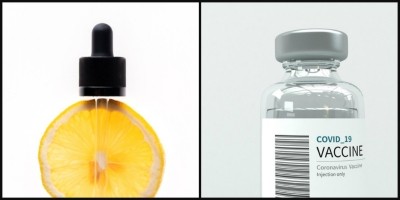Research advances make it possible to assign an age to individuals' immune systems

Among the supplement industry experts taking a deep dive into the concept is Dr Jeffrey Bland, PhD. Dr Bland, known as one of the pioneers of the field of functional medicine, is the founder of the Personalized Lifestyle Medicine Institute as well as the supplement brand Big Bold Health.
Field gaining traction
Dr Bland said immunosenescence is relatively new as research concepts go but has been gaining traction rapidly. And it’s a field of research that affords wide application for nutritional solutions, he said.
A paper published in 2018 defined the concept this way: “Immunosenescence is a term that describes a different state of the immune system in aged people, in association with detrimental clinical outcome, due to reduced ability to respond to new antigens. Although immunosenescence is a phenomenon present in the majority of individuals, factors like genetic, environment, lifestyle, and nutrition are responsible for their heterogeneity among individuals.”
A search on the PubMed database bears out Dr Bland’s assertion that the field is gaining steam. Using ‘immunosenescence’ as a search term brings up more than 2,400 results. It wasn’t until 2010 that more than 100 papers were registered in a year using the term. Not surprisingly, there was a significant spike of such research in 2020, with 314 such papers registered in the database. There have been an additional 89 added so far in 2021, which puts this year’s total on a pace to equal or exceed the 2020 figure.
Google Trends data, which captures what Internet users are looking for, tells a different story. There is no discernible trend, either up or down, for searches with the term ‘immunosenescence.’ That could be an indication that while the concept has gotten researchers’ attention, more work needs to be done to explain it to the general public.
Flow cytometry pushed field forward
Dr Bland said some technical advances have enabled the field to advance rapidly. A prime example is the spread of the use of flow cytometry devices. This analytical approach allows a researcher to quickly discern which cells are present in a given situation and in what relative amounts. The term itself was only generally agreed upon in 1978.
The technology allowed researchers to better understand which immune cells did what. This allowed a much finer grained view of immune system performance, rather than using the previous gross measures of who got sick and who didn’t, and how long the sick people stayed sick.
“You can only understand the personality of the immune system if you can understand the players in the game,” Dr Bland said.
But the ability to gather data was only the first step, he said. What was needed was a more refined way to use it. Enter the field of computational biology, which was gathering momentum in parallel with the hardware advances.
“The second development was taking that huge amount of data and trying to understand it through bioinformatics,” he said.
Turning point: Ability to put an age number on the immune system
This then allowed the investigation of how these individual cells change over time, Dr Bland said. Researchers could look epigenetic changes in cells and also how DNA methylation, or the accumulation of additional structures into the DNA strand, can alter the function of this centrally important molecule over time.
“If you put all this together you can start to develop a quantitation to evaluate the biological age of the immune system. And then you can relate that to chronological age,” he said.
Dr Bland said the result is a potential turning point in the history of immune support and healthy aging. In his view, it will soon be possible to prove that in some discrete ways it will be possible to turn back the clock. And it will also be possible to see exactly how certain interventions affect this process.
“Studies are now showing that you can roll back this relative age of the immune system. I think its an extraordinary moment in the history of clinical medicine,” he said.
Using the research approach to inform product development
It forms the backbone of the approach Dr Bland’s company, Big Bold Health, is using to build out the research suite backing its HTB Rejuvenate product. Among its key ingredients is 2-HOBA (2-hydroxybenzylamine), which is found in Himalayan Tartary Buckwheat, a legacy food crop the organic cultivation of which the company is pushing in concert with an agricultural partner. The crop was known in history but fell by the wayside as newer food crops, optimized for mechanical harvesting and bred in concert with the use of artificial fertilizers and chemical pesticides and herbicides, came to the fore.
The supplement is formulated to provide a level of phytonutrients equivalent to consuming 1/4 pound of Tartary Buckwheat flour a day.
















